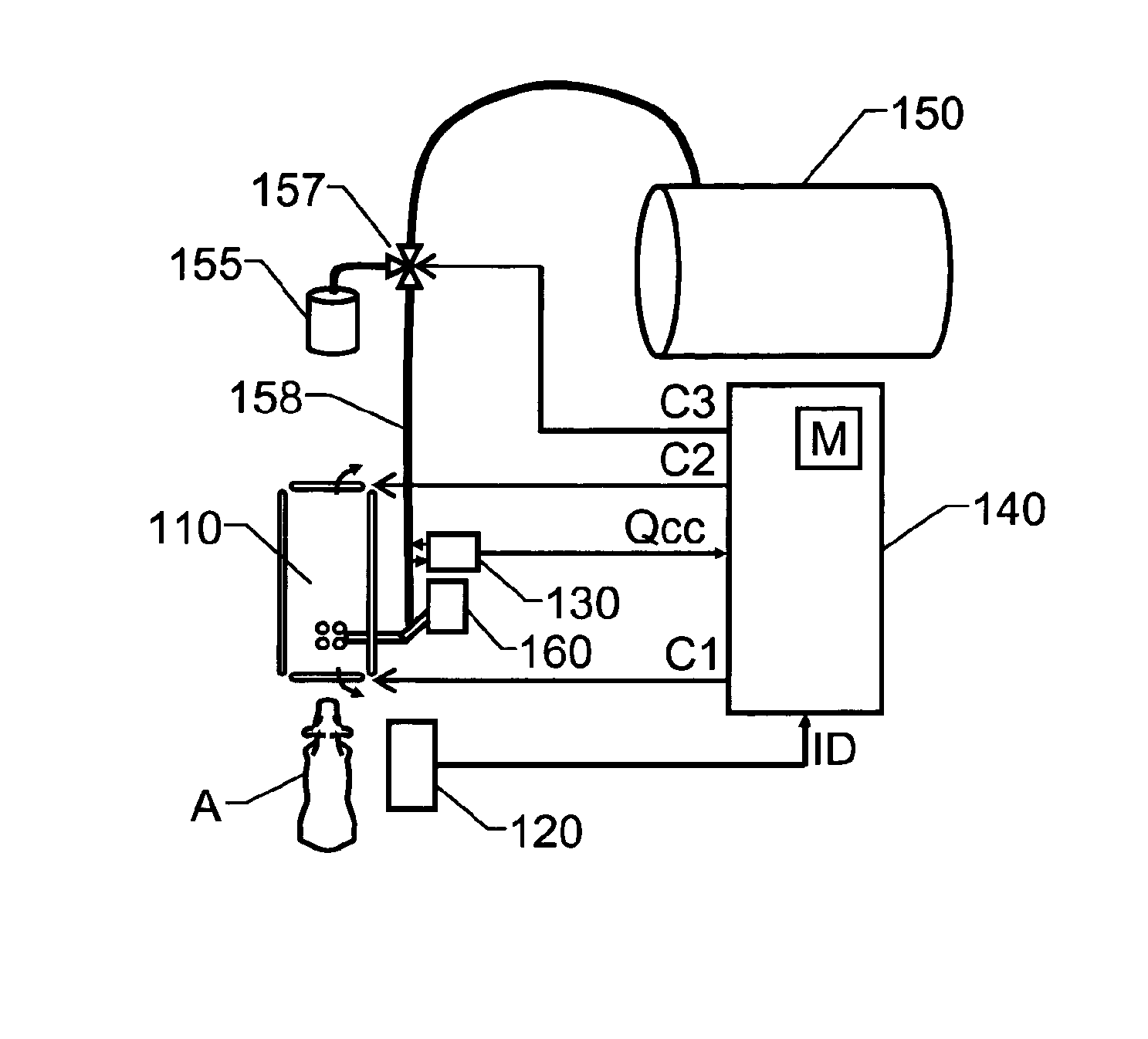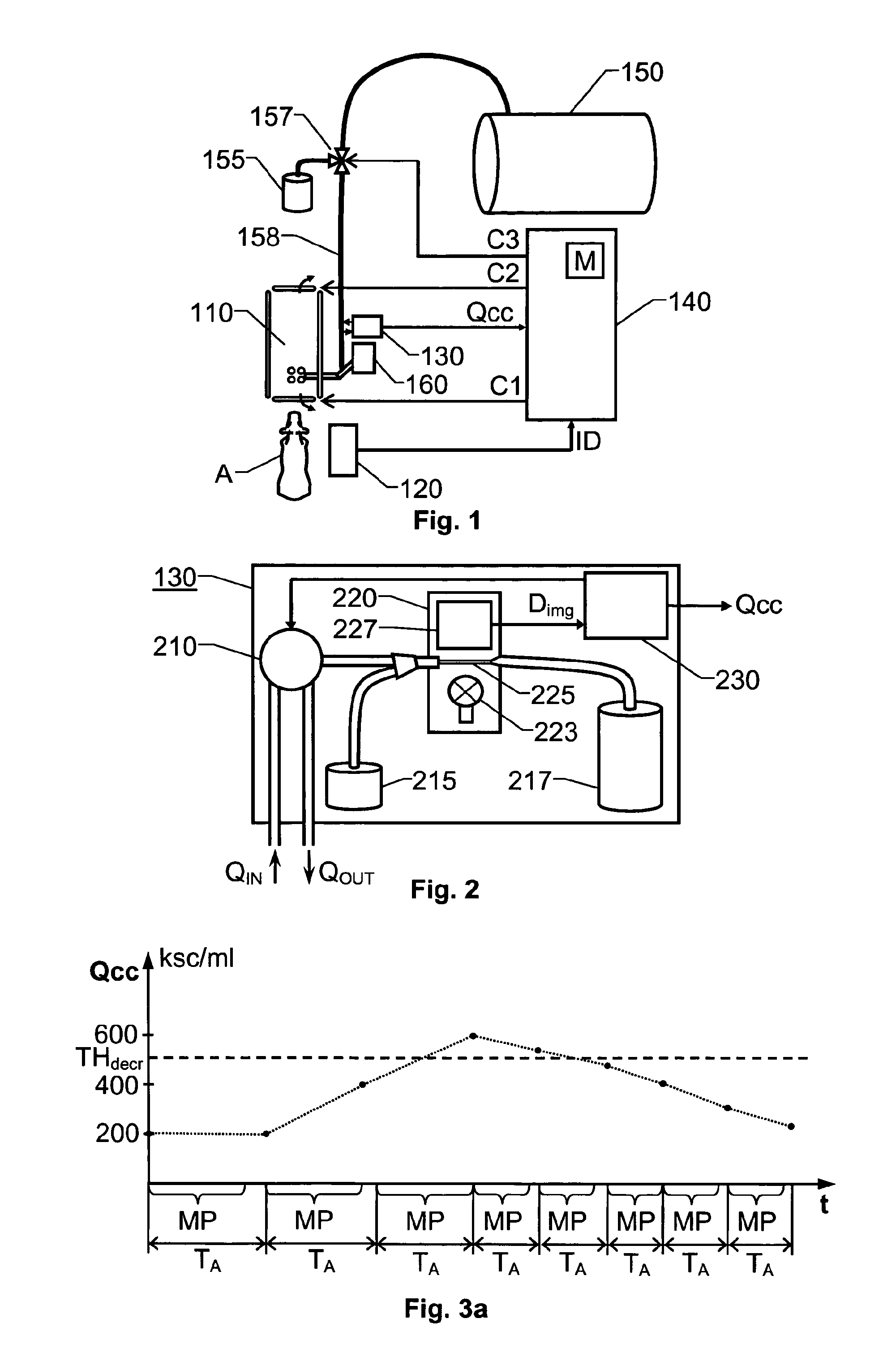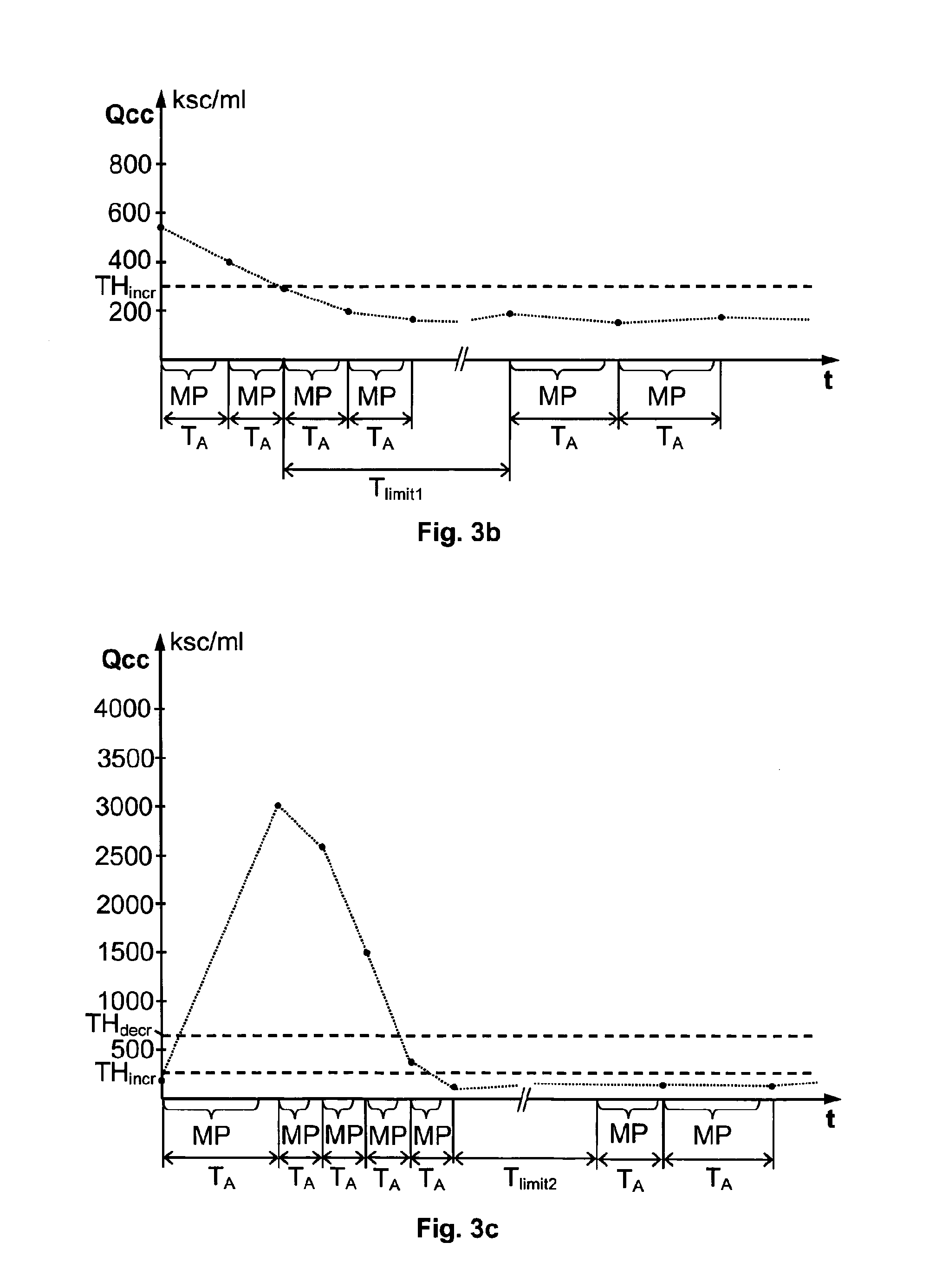Milking system
a technology of automatic milking and system, applied in the field of automatic milking systems, can solve problems such as not providing an adequate basis for assigning an appropriate amoun
- Summary
- Abstract
- Description
- Claims
- Application Information
AI Technical Summary
Benefits of technology
Problems solved by technology
Method used
Image
Examples
Embodiment Construction
[0029]We refer initially to FIG. 1, which schematically shows an overview of a milking system according to one embodiment of the invention. The milking system includes a milking machine 110, an identification arrangement 120, a cell counter unit 130 and a control unit 140.
[0030]The identification arrangement 120 is configured to identify an animal A approaching the milking machine 110. Of course, many alternative identification arrangements are conceivable according to the invention. For example the animal A may be identified at a gate means before reaching the milking machine 110, or the animal A may be identified when already present at milking machine 110. In any case, the animal A is only milked by the milking machine 110 if a set of milk permission criteria are fulfilled for that animal A. For example, this can be effected by the identification arrangement 120 forwarding identification data ID for the animal A to the control unit 140, the control unit 140 checking the set of mi...
PUM
 Login to View More
Login to View More Abstract
Description
Claims
Application Information
 Login to View More
Login to View More - R&D
- Intellectual Property
- Life Sciences
- Materials
- Tech Scout
- Unparalleled Data Quality
- Higher Quality Content
- 60% Fewer Hallucinations
Browse by: Latest US Patents, China's latest patents, Technical Efficacy Thesaurus, Application Domain, Technology Topic, Popular Technical Reports.
© 2025 PatSnap. All rights reserved.Legal|Privacy policy|Modern Slavery Act Transparency Statement|Sitemap|About US| Contact US: help@patsnap.com



